On Earth, there are very few foods rich in healthy omega-3 fatty amino acids that are essential for normal functioning. They enter the body exclusively from food, because a person cannot synthesize them on their own. What is the source of omega-3? In fact, the choice is not great. Oils, some types of nuts and legumes, some representatives of cereals, vegetables and fruits, but fish and seafood are the leader in the content of the “right” fats. In the article, we will consider what else this product is useful for, as well as give tables of fish fat and its calorie content.
The role of omega-3 for humans
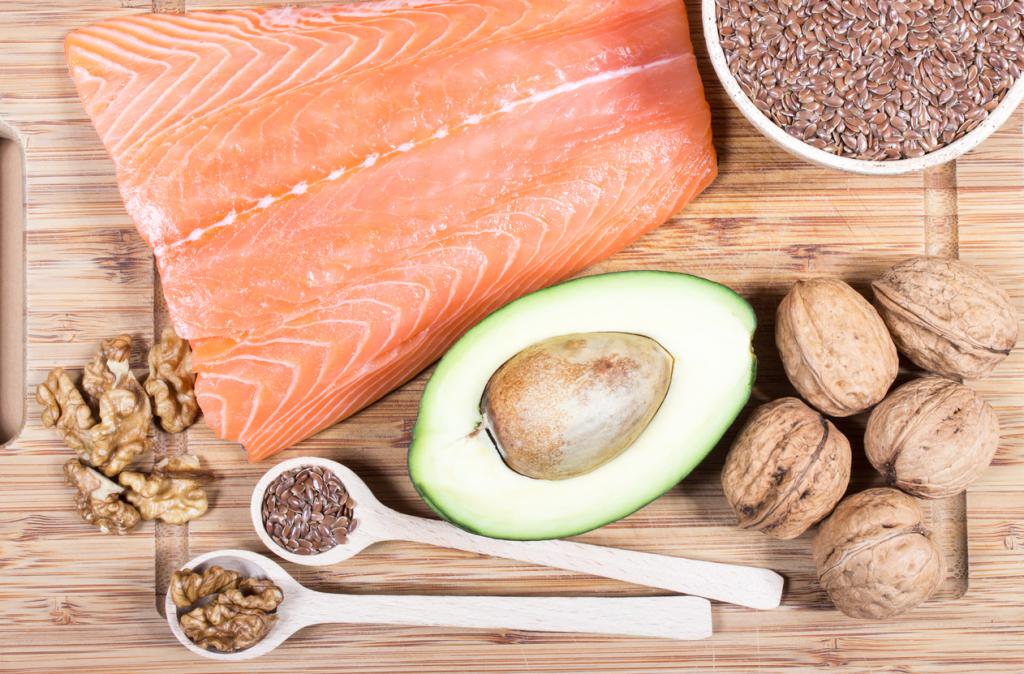
Useful fish makes the presence in its composition of "good" fats, which must necessarily be in the human diet. The list of problems that omega-3 helps to solve and prevent is pretty impressive. Here is what makes this valuable component:
- participates in the construction of the nervous and endocrine system;
- stabilizes the brain;
- normalizes the work of the heart;
- dilutes blood, preventing blood clots;
- accelerates metabolic processes;
- removes "bad" cholesterol from the body;
- stops the foci of inflammation;
- boosts immunity;
- Helps maintain normal blood pressure
- improves the appearance of skin, hair and nails;
- prevents diseases of the skin;
- reduces the risk of developing eye diseases;
- maintains proper sugar level;
- prevents the development of joint diseases;
- normalizes hormonal levels;
- helps to cope with stress and nervous overload, prevents depression;
- plays a key role in the normal development of the fetus during pregnancy.
And that's not all! Omega-3 increases the stamina of the body, gives a tone, increases working capacity, replenishes energy costs, fights chronic fatigue syndrome, helps to cope with physical stress.
Rich omega-3 fish and seafood
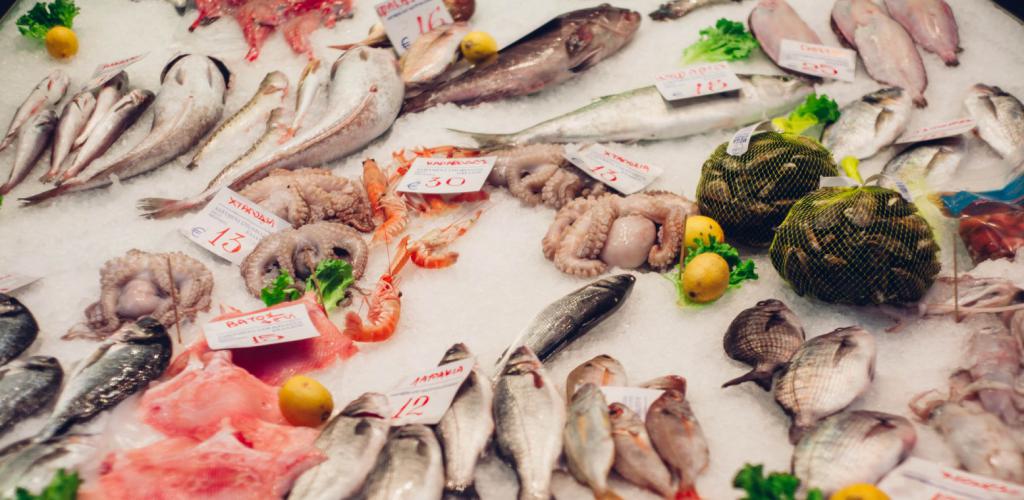
Fatty fish species contain a large amount of omega-3 fatty acids, and also serve as an excellent substitute for heavier and difficult to digest meat products. Medium-fat fish is often included in diet and sports menus, since, on the one hand, it has a sufficient level of “correct” fat and high-quality protein, and on the other, medium-fat varieties are well absorbed by the body. Low-fat fish, as well as almost all seafood, are ideal for healthy and dietary foods, as they are light and nutritious foods. Below is a table of omega-3s in popular fish and seafood.
Name | Omega-3 content (per 100 g) |
Fish fat | 99.8 |
Cod liver oil | 10-21.00 |
Caviar (black / red) | 6.8 |
River eel | 5,6 |
Mackerel | 2.7-5.3 |
Herring, trout | 2-2,4 |
Salmon | 2.5-2.6 |
Halibut | 1.76 |
Sardines (Atlantic), whitefish | 1.5-1.8 |
Sprat | 1.4-3.5 |
Salmon (canned food) | 1.8 |
Sardines (canned food) | one |
Shark, swordfish | 0.8 |
Halibut | 0.7-1 |
Pink salmon | 0.7 |
Mussels, sea eel | 0.6 |
Flounder, mullet, carp | 0.5-0.6 |
Squid, oysters | 0.4-0.6 |
Mollusks | 0.4 |
Octopus | 0.3 |
Shrimp | 0.2-0.5 |
Perch | 0.2-0.6 |
Crustaceans | 0.2-0.4 |
Tuna | 0.2-0.3 |
Pikeperch, cod, scallop | 0.2 |
Catfish, pike, bream | 0.1 |
A person needs to consume 1 g of omega-3s daily, and fish is an excellent source of this fatty acid. But this is far from the only advantage of this product.
What else is fish useful for?
Fish contains easily digestible protein, which is easily digested by the body. It is also rich in vitamins A, E, F, D, which contribute to the maintenance of human health and beauty, a variety of minerals, including calcium, phosphorus, iodine, magnesium, zinc, etc.
Fat division of fish

Different types of seafood differ in the ratio of proteins, fats and are generally divided into 3 groups. The classification of fish varieties is based on a fat index, which varies from 0.2 to 35% in the product. Any fish is very useful, but for a healthy diet, it is recommended to regularly use medium-fat, and even better low-fat varieties. The processing method also matters. The final calorie content of the dish will depend on it. Nutritionists recommend cooking and baking fish, so it will retain all the beneficial properties and will not "gain" extra calories.
| Group | % fat per 100 g | Kcal per 100 g |
Low fat | Less than 4 | 70-100 kcal |
Medium fat | 4-8 | 100-140 kcal |
Greasy | More than 8 | more than 200 kcal |
Low Fat Fish

Low-fat fish is considered, in which the percentage of fat does not exceed the number 4, and the energy value ranges from 70-100 kcal. River representatives - perch, ruff, pike, etc. Marine - cod, flounder, roach, pollock, etc. This product is indispensable for diets. It contains the necessary nutritional components and is completely absorbed by the body.
| Name | Fat content per 100 grams of product |
Ruff | 2 |
Pike | 1,1 |
Cod | 0.6 |
Flounder | 2.6 |
Vobla (fresh) | 2,8 |
Pollock | 0.7 |
Hake | 2.2 |
Perch (river) | 0.9 |
Crucian | 1.8 |
Tuna | 0.7 |
Medium Fat Fish
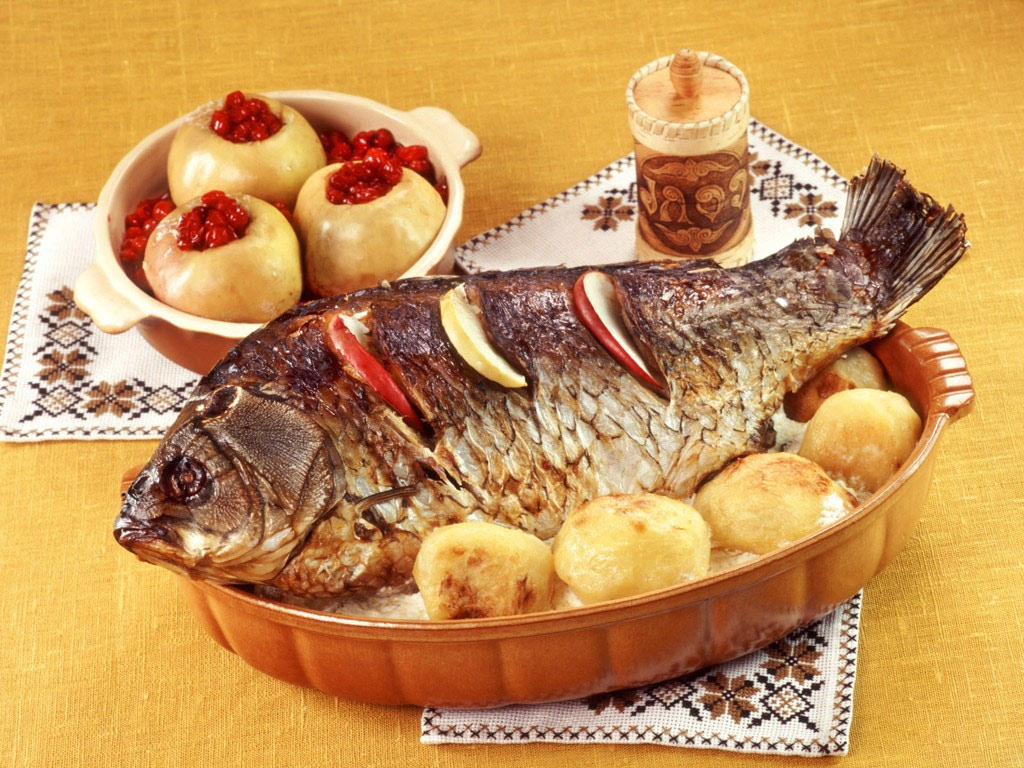
Such a fish has a fat content of 4 to 8% and an energy value of 100 to 140 kcal. The most famous river varieties are carp, catfish, trout, etc., marine varieties - chum, horse mackerel, pink salmon, etc. Due to its balance, it is ideal for a healthy diet.
| Name | Fat content per 100 grams |
Carp | 5.3 |
Catfish | 5.1 |
Bream | 6.4 |
Horse mackerel | 5 |
Perch (marine) | 5.2 |
Carp | 5.3 |
Fatty Fish
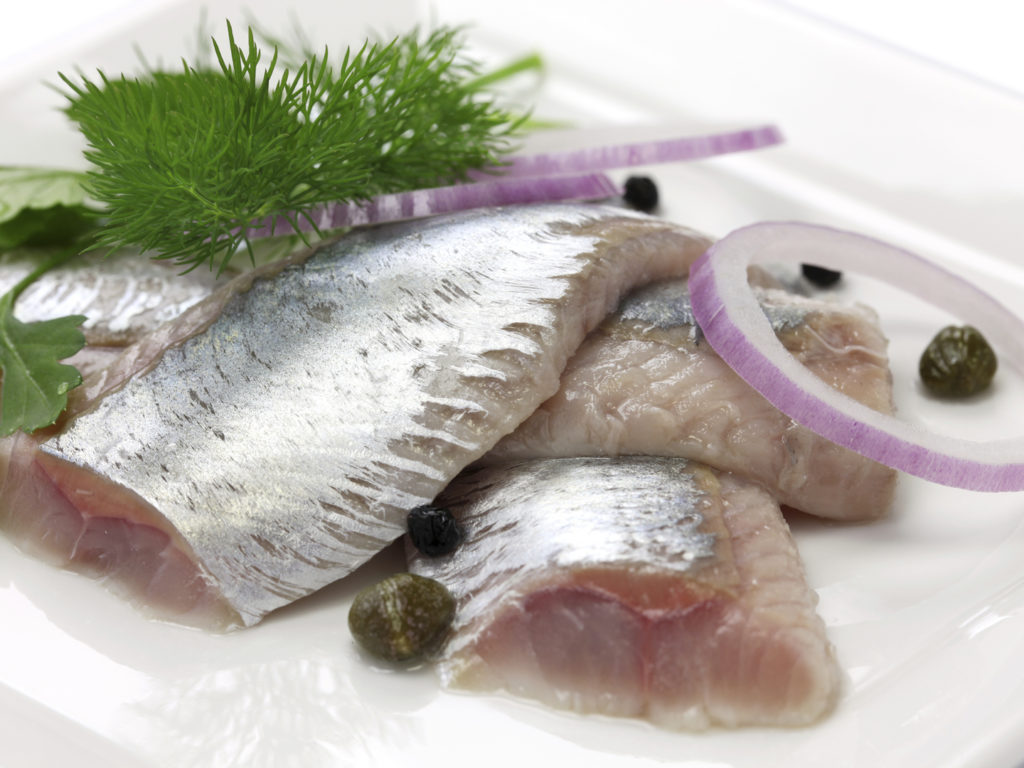
The fat content of such fish begins with 8%, and the caloric content reaches 200-300 kcal. This is saury, mackerel, beluga, ivasi, silver carp, sturgeon varieties, etc. This product is not suitable for dietary nutrition, but it is indispensable for a full and balanced diet (in moderation!). It is in such varieties that the highest level of omega-3, as well as a lot of iodine, helps the thyroid gland.
| Name | Fat content per 100 grams |
Saira | twenty |
Mackerel | 9 |
Iwashi | eleven |
Silver carp | 9 |
Acne | 27.5 |
Herring | 19.5 |
Calorie content of fish (table)
Another important indicator for fish, as, indeed, for any product, is its energy value. For those who monitor their diet, it is important to understand how many calories are contained in a particular dish. It is logical that the fatter the fish, the higher its calorie content, but a lot will depend on the processing method. For example, flounder refers to low-fat varieties. In fresh form, it contains only 83 kcal per 100 g. If you boil it, then the finished dish will contain about 100 kcal, and if you fry it, then the calorie content will grow almost 2 times. Such a dish can not be called diet. Therefore, everything is relative. Below is the energy value of fresh fish per 100 grams of product, as well as the calorie content of some seafood, which is very desirable to include in your menu.
Name | Kcal per 100 grams |
Ruff | 88 |
Pike, flounder | 84 |
Cod | 69 |
Vobla (fresh) | 95 |
Pollock | 72 |
Perch (river), hake | 82 |
Crucian, tuna | 87 |
Carp | 112 |
Trout | 120 |
Chum | 127 |
Stavrida, som | 114 |
Pink salmon, salmon | 140 |
Perch (sea), bream | 103 |
Common carp, sterlet | 121 |
Saira | 205 |
Mackerel | 191 |
Sturgeon | 179 |
Beluga | 150 |
Iwashi | 182 |
Acne | 333 |
Herring | 161 |
Shrimp | 96 |
Mussels | 77 |
Oysters | 72 |
Seafood Cocktail | 172 |
Crayfish | 90 |
Crabs | 83 |
Red fish
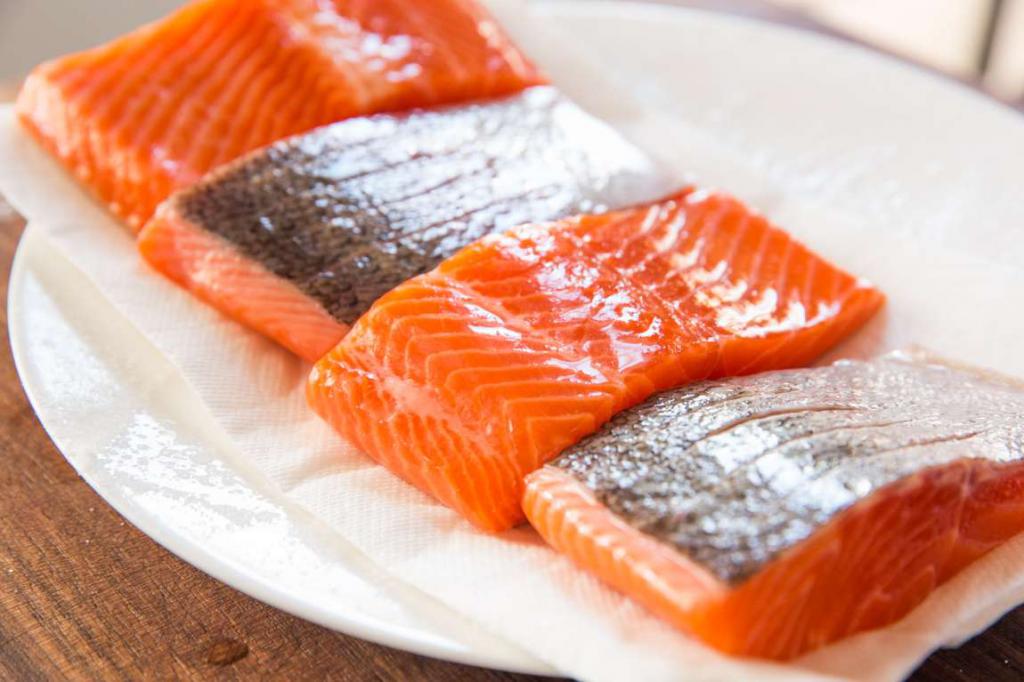
One of the favorite delicacies for many are red fish dishes. First of all, it is simply amazing in taste, and, besides, fortunately for all fish-eaters, it is incredibly useful. Salmon, chum salmon, pink salmon, trout, sterlet, beluga, sturgeon - these are perhaps the most famous representatives of this class. They belong to the group of medium fatty and fatty foods and contain moderate to high calorie content. Red fish is rich in omega-3s, the benefits of which we have described above. In this regard, by including this product in the diet, you can strengthen almost all body systems: heart, bones, nerves, etc.
Name | Fat content per 100 grams |
Salmon | fifteen |
Chum | 5,6 |
Pink salmon | 5-7 |
Trout | 6.6 |
Sterlet | 6.1 |
Beluga | 9 |
Sturgeon | eleven |
Output
Fish, as the main source of omega-3, should be present in the diet of every person regularly, and not just on Thursdays. Moreover, you need to use all types: from low fat to fat. The latter less frequently and in small quantities. But diet varieties can pamper yourself more often. Of course, fish is not a panacea for all diseases, but the fact that tail-fin and seafood make up the basis of the long-livers ’diet makes us wonder.